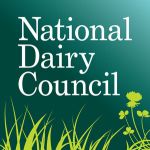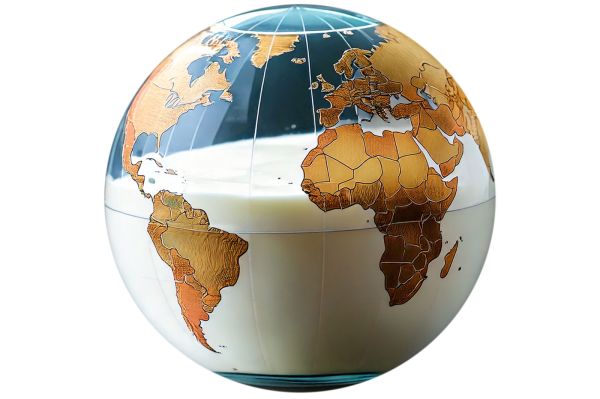
Global outlook – positive but not without challenge

On the milk supply side of the equation, he said: “There is limited enough scope for growth in Europe and probably globally too to a large extent. Demand has been stable, but there is room for caution on the demand side. There has been an easing off in Chinese demand in the last couple of months. Also, with the uncertainty around trading and tariffs, these are issues that must be monitored constantly.”
Milk prices
The Ornua economist looked across milk prices and international dairy sales to confirm relative stability in the dairy sector: “Ornua’s Purchase Price Index (PPI) has been stable in recent times. The index figure for February, as reported by Ornua earlier in March, was unchanged on the January figure at 161.9. After deducting estimated processing costs of 9.5c/L, the PPI figure gives an indicative return of 48.3c/L for that month and reflects stable market returns for February.
“The Global Dairy Trade (GDT – online dairy auction) has stabilised after two minor reductions in January and February, with the March 18 auction steady at 1,251, reflecting an average price per tonne of €3,888. GDT figures often reflect a seasonal buying pattern with a pickup through quarter four, as that’s a strong buying period for Asian buyers, in particular, and that generally follows into the early quarter one, and then for March and April you often to see a bit of market weakness, which is not that unusual. The outcome so far is a bit stronger than expected. That’s probably down to buyers who traditionally would’ve bought from the US looking to the GDT to secure products, mainly Oceania buyers, but also some European buyers as well.”
US tariff policy causing significant concern – ICOS
ICOS president, Edward Carr, has stated that the trade policies of the US administration are creating ‘significant uncertainty for global trade’. He added that the possibility of additional US tariffs, as indicated by the Trump presidency is deeply concerning.
In a formal submission to the European Commission, ICOS said: “As a matter of principle, food products should not be used as leverage as part of international trade disputes.”
In March, the EU had developed a draft list of counter-measures in response to the imposition of US tariffs on steel and aluminium exports from the EU. Following a request for feedback on the products included in the EU list of counter-measures, ICOS called on the European Commission to de-escalate trade tensions with the US. He stated: “ICOS understands that the EU is placed in a very difficult situation. However, the European Commission must seek to avoid unnecessary escalation in trade tensions with the US. Fundamentally, we strongly oppose the inclusion of all food including dairy products, as part of the suite of EU counter-measures as a matter of principle. The inclusion of food products as trade countermeasures will have negative consequences for both the EU and US, leading to higher food prices and reduced availability for consumers.”
He said the US is an extremely important market for Irish dairy farmers and the co-operative sector. “The value of Irish dairy exports to the US was over €830m in 2024. High-value butter and cheese exports are the key drivers of Irish dairy exports to the US, as well as dairy powder ingredients and other products. It is vital that countermeasures introduced by the EU should be targeted, proportionate and avoid unintended consequences for farmers and their co-operatives.” Mr Carr said protectionist trade policies will ultimately prove to be counter-productive. "Therefore, we urge the EU in its engagement with the US administration to prioritise constructive dialogue and to avoid unnecessary escalation," he said.
Supply trends
Ornua regularly monitors supply trends globally: “I see New Zealand up a bit. Other countries seem to be static or below historic production levels. Europe has been pretty flat or slightly weaker, I’d say, over the last couple of months. That’s been driven mainly by French and German production figures, even though supply was trending upwards towards the end of 2024. The last couple of weeks have been below expectations. There’s talk of bluetongue disease still impacting continental milk production coming into the new season. Milk solids have been a little bit stronger in Europe, but I think, overall, for the year ahead, European milk forecasts are currently flat to slightly weaker. The picture is a bit stronger in New Zealand. They have been showing good levels of growth in historic comparisons, though the growth rate has backed off a bit in the last few months. Milk solids have been much stronger globally, so bringing everything together in terms of the main producers, forecasts for the year indicate a half per cent increase in output overall. That’s still a fairly balanced picture.”
The Chinese equation
Ciarán commented on Chinese dairy demand and its self-sufficiency targets: “It’s still a very big player and a very strong player. In terms of imports, China has traditionally been more focused on buying from New Zealand, Australia, and probably the US more than from Europe. But Chinese demand obviously influences European export prices. Chinese dairy imports peaked back in 2020/2021. They’ve come back a good bit in the last three years and have stabilised in recent months, which is certainly positive. But we’re hearing reports that their stocks have been built up again. Looking ahead, there has been a drive to become more self-sufficient. They’ve been relatively successful in building up their own dairy herd for fresh milk supply but, to a large extent, they remain quite dependent on imports. They’ve been big importers of cream, in particular from New Zealand, and also from Europe. I still see them being a major driver of the market overall, particularly on the cream side. Even if Irish and European exports in terms of value are not that strong, if Chinese demand is robust, it becomes a home for New Zealand product, which means New Zealand is not as active in other markets that European exporters are competing in.”
UK considerations
UK trade deals with Australia and New Zealand have had little impact on Irish trade with the UK as yet, the Ornua representative confirmed: “It’s definitely been a risk and it’s one that we’ve been keeping a close eye on, particularly from the start of this year. They became more active in the UK market last year. Volumes started off quite strong but dipped a bit in the second half of last year. They met roughly half of their quota for cheese and butter. The impact hasn’t been as strong as had been feared. I envisage that there’ll continue to be some volume of product shipped from New Zealand into the UK, but it probably doesn’t make a lot of commercial sense for there to be a significant increase in volume. It’s a long distance and there’s a cost associated with that. Potential New Zealand cheddar displacement in the UK market, where Ireland has still a strong presence, is a focus for us.”
US Kerrygold market
The Kerrygold brand has a premium position in the US market and has faced previous tariff impositions, as Ciarán explains: “We’ve been here in the past under previous Donald Trump tariffs. We continued to export, and we continued to grow market share. We’d be hopeful that there is a US consumer appetite for Kerrygold butter that will continue even at a potentially higher price point. Again, that remains to be seen and there are certainly challenges there depending on the rate of the tariff and potential tariff increases.”
Adequate supply
Ornua continues to secure adequate supplies of product to service its customers, he says: “There’s been a lot of talk around milk supply in Ireland and certainly the scope for growth has been impacted. Looking at last year, butter volumes were down compared to the previous year, but they were still quite strong, historically speaking. You’re seeing the good returns for Kerrygold butter and our co-op members recognise that and they continue to produce adequate butter for us. Milk supply is something that we’re quite aware of with the milk pool in Ireland plateauing and the scope for volume growth probably easing off in the coming years. Growth in milk solids could compensate for at least some of that volume inertia. We are conscious of the need to ensure that we have enough cream for the Kerrygold brand and we’re working very closely with our co-op member suppliers so that remains the case.”
This interview was completed amidst ongoing developments regarding US tariffs on European exports to the US.




